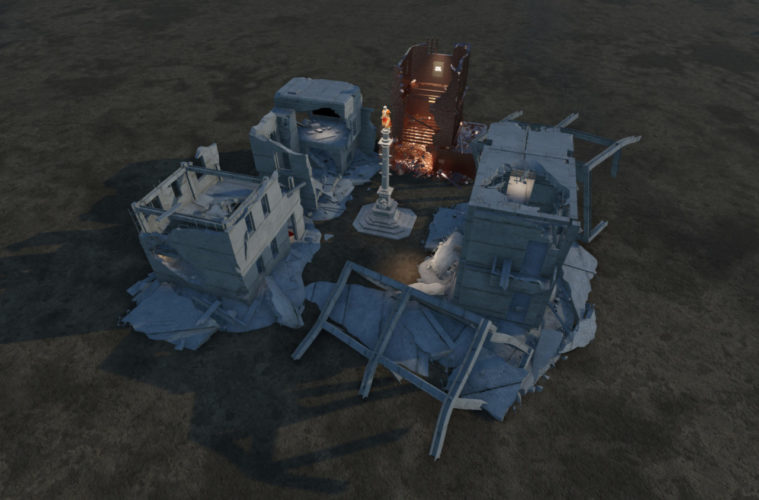The history of monuments throughout the western landscape has inarguably served to center and celebrate the colonial, patriarchal, and necro-capitalist legacies of violence that founded and continue to plague the United States. This normalization of oppression and exploitation has, of course, historically met collective resistance; the most recent efforts being consolidated by Black Lives Matters protests in the heightened wake of predatory policing and the carceral state. With a slew of colonialist monuments being toppled, beheaded, and justly destroyed, the aesthetic regime of racism has prompted many to specifically reconsider the role of the museum – whose positionality amid COVID-19 had already been made tenuous. Calling into question the lineage of these practices within the contemporary art institution, the online exhibition Fallen Monuments begets a digital experience that reimagines collective memory, shared space, and the fragility of the museum.
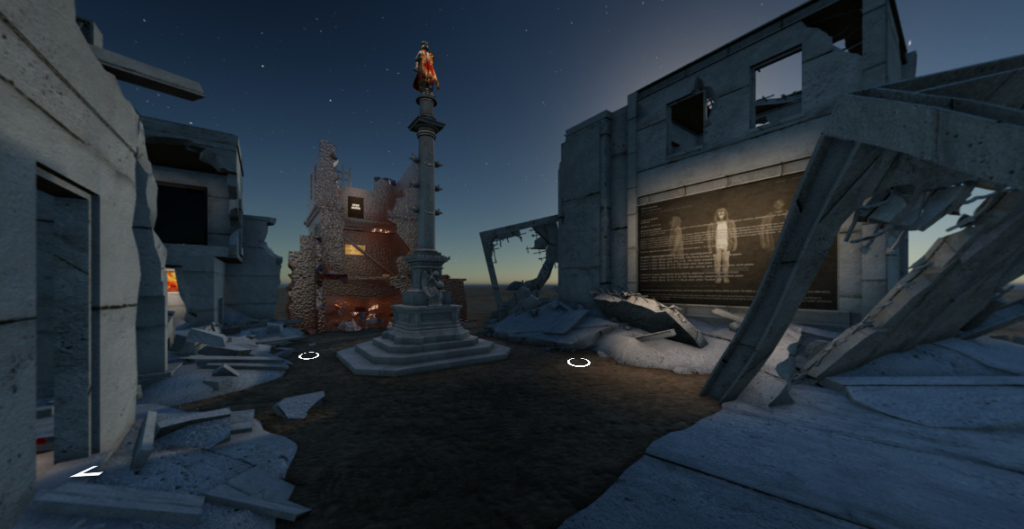
Fallen Monuments at EPOCH
Conceived and organized by the Los Angeles-based artist Peter Wu as part of his virtual experiment EPOCH, Fallen Monuments is an ambitious group exhibition whose conceptual foundation parallels Wu’s own meditations on the materialization of Otherness. Featuring works from Iván Argote, York Chang, Allana Clarke, Gala Porras-Kim, Ricardo Rivera, Marton Robinson, and Conrad Ruiz, the virtual exhibition is situated amidst the digital ruins of a VR-rendered architectural wasteland.
Expanding on the notion of the wasteland as a physically isolated area ravaged by culture, the viewer is immediately thrust into a ground-floor purview of the wreckage turned exhibition. Visitors are then provided with a variety of perspective points to choose from that have been scattered across both visible and inconspicuous locations. With Fallen Monuments’ explicit contestation of the monument (institutional and otherwise), the exhibition encourages us to reconsider the supposed neutrality of the museum, institutional violence, and its contents therein.
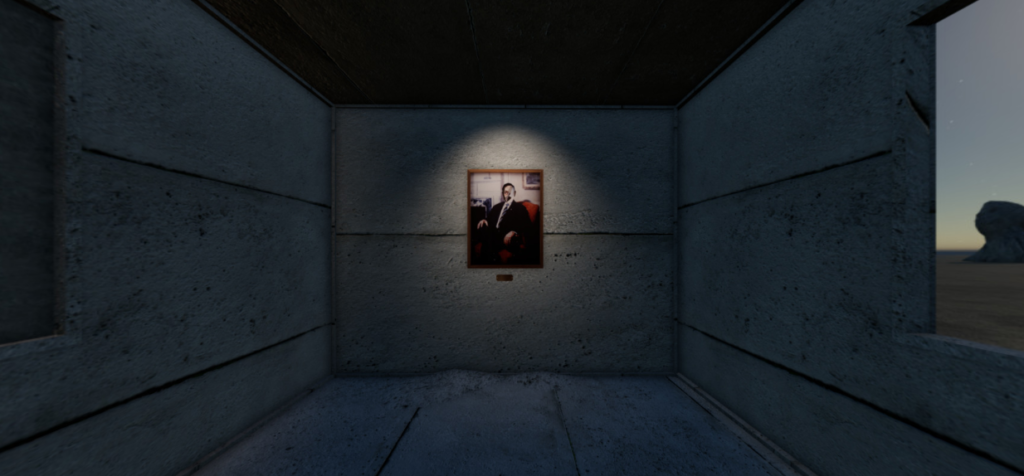
York Chang in Fallen Monuments at EPOCH
The role of spectatorship within the exhibition likewise situates the complexity of autonomy in the confines of the institution and its multi-stable relationship with forming meaning. This sentiment is perhaps best personified by York Chang’s I Am Sitting in a Feedback Loop, 2019 which recites a looping text that explores our relationship to, and anticipation of, collective propaganda. Meanwhile, the show’s central work Turista: Chrisopher Columbus Circle, New York, 2020 by Iván Argote formally anchors the surrounding architecture as well as the exhibition’s broader meditation on the colonial imaginary and revisionist futures. Enacting a formal homogenization of white supremacist namesakes by obscuring the sculpture’s facial details, the starkness of the brightly colored poncho amidst an otherwise dreary VR landscape serves as a defiant, wavering signifier – cloaking the materialization of violence with a subversive and celebratory gesture in its stead.
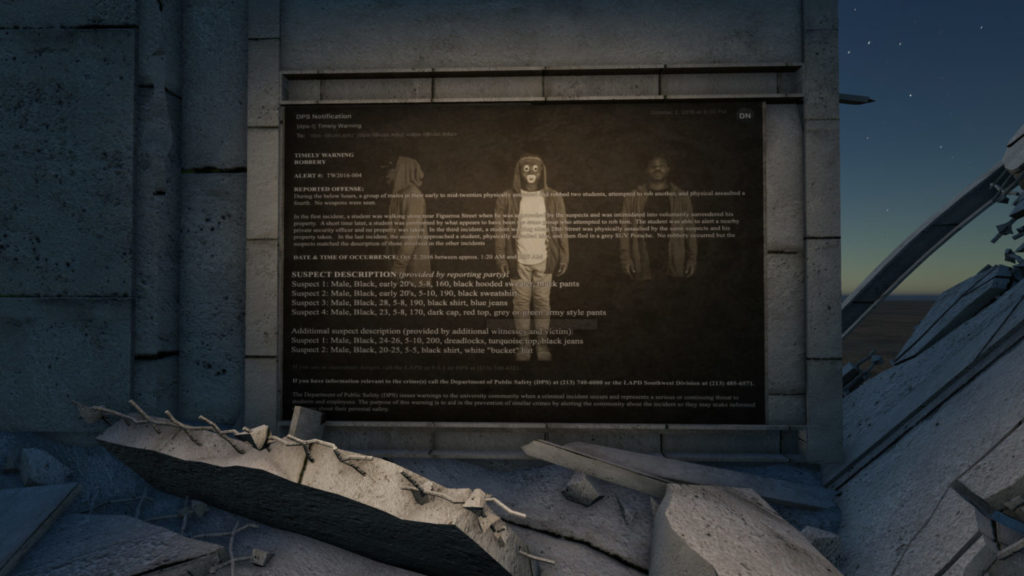
Marton Robinson in Fallen Monuments at EPOCH
Paralleling contemporary conversations concerning the disruption of space, place-based interventions, and state-sanctioned violence, additional works presented to the viewer neighboring Argote’s include Marton Robinson’s Tecnologías Deculoniales: Slot-Machine, 2020, Antagonistics (Legacy Portrait I), 2013 by Chang, as well as digital reproductions from Conrad Ruiz’s Man on Fire series (2020). While Ruiz’s works enact a meditation on the violence and detriment that so often accompanies masculinity, Robinson’s Slot Machine extends a similar sentiment specifically regarding the predation of black male bodies in the U.S. With his central visage clad in a SAMBO mask alongside the textual overlay of a Department of Public Safety inscription onto his likeness, Robinson’s work juxtaposes the social tenuousness of black bodies with the same precarity found in online spaces – contingent, performative, and under surveillance.
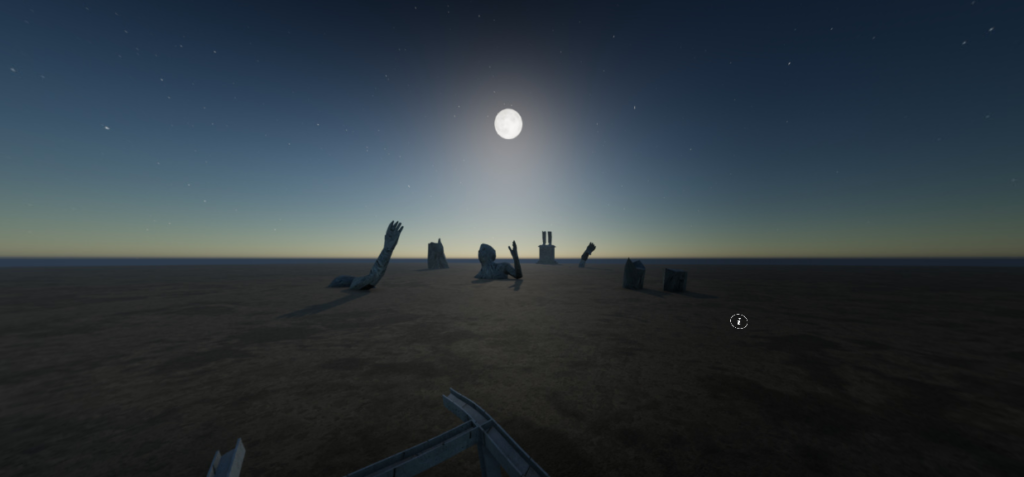
Gala Porras-Kim in Fallen Monuments at EPOCH
Meanwhile, beyond the ruins in the neighboring expanse lies the resting place of Gala Porras-Kim’s Fallen Monuments after Ozymandias, 2020. The spectral and seemingly pained countenance of fallen monuments taken down to date (the work is being updated as current events unfold) jut out of the dry rendered earth – enacting a generative graveyard befitting of the show’s recurrent contemplation on institution death and decay.
Fallen Monuments‘ explicit invocation of the contemporary destruction and physical removal of colonial monuments across the U.S. situates the exhibition as both a timely celebration and cautionary mediation. With additional works latently displayed within and behind varying crevices and dilapidated walls, including the video works Drawing Translations, 2018 by Ricardo Rivera and You Belong to Nothing & Nothing Belongs to You, 2017 by Allana Clarke, the exhibition collectively considers contemporary art’s resistance to and entanglement with social forms of violence, institutional and otherwise.
Though the relationship between aesthetic and social forms has never been clear cut, Fallen Monuments’ rendering and featured works engender a dislocative space that confronts deterritorialization and displacement while meditating on the possibility of future worlds and the role (or absence) of the museum in them.
Explore the exhibition at epoch.gallery through September 4.
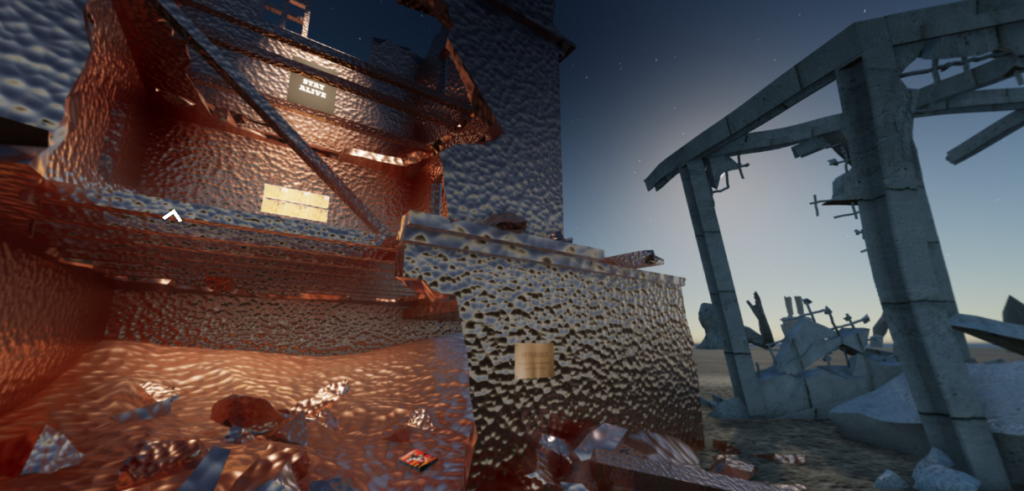
Fallen Monuments at EPOCH
Advertising disclosure: We may receive compensation for some of the links in our stories. Thank you for supporting LA Weekly and our advertisers.

